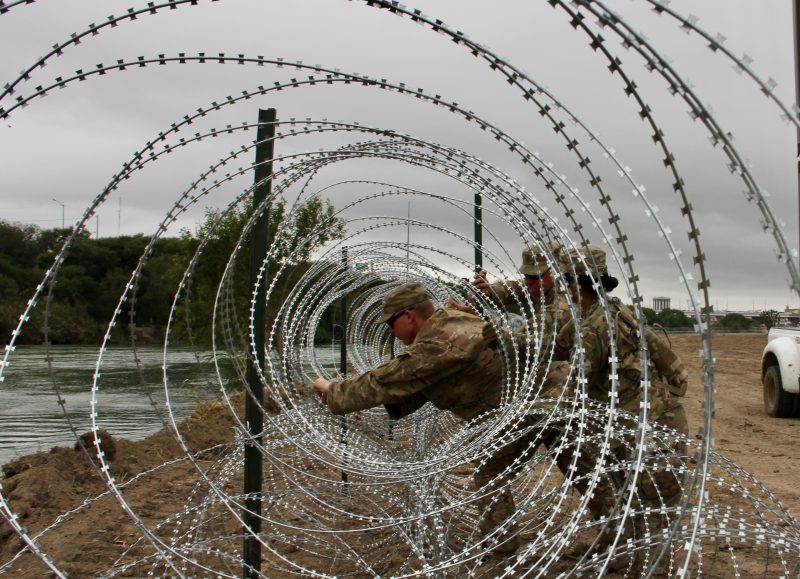How the US military could build Trump’s border wall
The troops’ role so far has primarily been to erect miles of concertina-wire fencing along popular crossing points (Thomas WATKINS)
Washington (AFP) – President Donald Trump has declared a national emergency to address what he called an “invasion” of drugs, gangs, human traffickers and undocumented migrants over the US border with Mexico.
The declaration means Trump can sidestep Congress to access federal funds from elsewhere to help pay for construction of a border wall.
With the Pentagon by far the biggest source of cash, here is a look at how the US military could help build Trump’s wall.
– How much? –
Trump’s declaration of a national emergency means he can now draw on Pentagon funds that have already been approved by Congress for 2019.
He had wanted Congress to authorize $5.7 billion for a wall along parts of the border, but lawmakers provided just $1.375 billion for barriers, and specifically not a solid concrete wall.
The White House said Trump will access $6.1 billion from two Pentagon sources: $3.6 billion from a military construction fund, and $2.5 billion from Defense Department counter-drug activity funds.
Even though Trump’s emergency declaration has been anticipated for weeks, the Pentagon was not able immediately to provide details on which programs or projects would lose out as the money is repurposed for Trump.
Currently, most of the construction funds are already earmarked for military housing, base improvements and various other projects.
The Defense Department could also scrap or scale-back planned projects, though such a move would spark the ire of US lawmakers who lobbied for the projects and whose districts would be impacted.
As a candidate, Trump repeatedly vowed that Mexico would pay for a wall.
– Who would build it? –
The Pentagon already has some 4,000 active-duty troops stationed along the border, deployed under a controversial order Trump gave last year ahead of midterm elections.
Additionally, about 2,100 National Guardsmen are supporting border operations.
The troops’ role has primarily been to erect miles of concertina-wire fencing along popular crossing points, though the soldiers are not necessarily experts at building more permanent walls.
Such a task could fall into the hands of the Army Corps of Engineers, which has decades of experience working large-scale projects.
The Pentagon could flow additional troops to the border to help, or the work could be farmed out to private contractors.
– Under what authority? –
The National Emergencies Act allows the president to declare a national emergency, providing a specific reason for it.
That then allows the mobilization of hundreds of dormant emergency powers under other laws, and gives access to Pentagon funds.
National emergency powers can also permit the White House to declare martial law, suspend civil liberties, expand the military, seize property and restrict trade, communications and financial transactions — though Trump did not suggest any of that would happen under his declaration.
– Legal challenges –
The national emergency declaration is sure to be challenged in the courts and by Democratic lawmakers.
Also expect lawsuits from landowners on the border at risk of having their property seized by the government, and from environmental organizations furious that Trump wants to build a wall across environmentally sensitive areas.
House Speaker Nancy Pelosi and Senate Minority Leader Chuck Schumer, the Democratic leaders in Congress, immediately denounced Trump’s plan as a “power grab” by a president who had “gone outside the bounds of the law” to fund his 2016 campaign pledge to build the wall.
Disclaimer: This story is published from a syndicated feed. Siliconeer does not assume any liability for the above story. Validity of the above story is for 7 Days from original date of publishing. Content copyright AFP.


